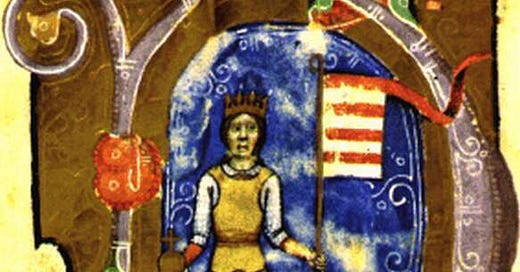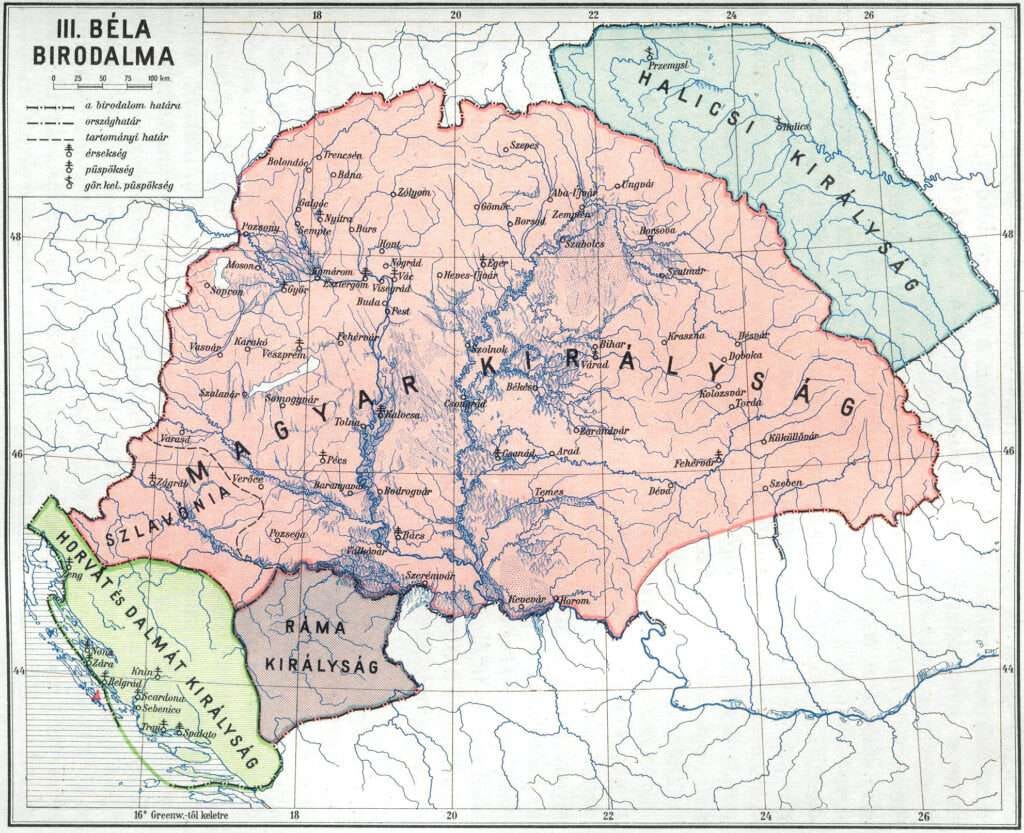King Béla III was also called Béla The Great. Indeed, he was perhaps the most successful monarch of the Árpád dynasty, whose reign is worth studying.
As a result of a treaty, Prince Béla went to the Byzantine court at the age of 15 to be educated there. The ageing and childless Byzantine Emperor Manuel took a liking to the Hungarian prince and soon betrothed him to his daughter and named him heir. However, Manuel had a son in 1169, and the Hungarian prince lost all hope of the Byzantine throne – but the unexpected death of his brother King István III gave him a chance to win another one.
King István III died in 1172, presumably from poisoning. Béla then returned home and announced his legitimate claim to the Hungarian throne. This claim was not supported by his younger brother Géza and his mother Queen Eufrozina, nor by most of the nobility, so the prince responded by asking Pope Alexander III directly for permission to be crowned King of Hungary by the Archbishop of Kalocsa. He reigned from 1172 to 1196.
Thanks to the years that King Béla III spent in Byzantium, the country was on good terms with the empire. He also developed intensive relations with Western Europe, especially France. Maintaining good relations with the papacy was also an important element of Béla III’s foreign policy. After the death of Manuel in 1180, Béla reversed his foreign policy towards Byzantium, which was in decline: he reconquered the Croatian and Serbian territories of the Kingdom of Hungary, and even took Dalmatia and the city of Zadar under his patronage in opposition to Venice.
Béla made the country a European power not only in terms of foreign policy, but also by modernising its domestic affairs. He introduced official writing (the royal chancellery), which had a positive effect not only on government: it is no coincidence that the first major coherent Hungarian language documents, the Funeral Oration and Supplication and the Old Hungarian Hymn to Mary, date from the reign of Béla III, and the oldest Hungarian historical work, the Gesta Hungarorum.
Keep reading with a 7-day free trial
Subscribe to Hungarian History 1366-1699 to keep reading this post and get 7 days of free access to the full post archives.






